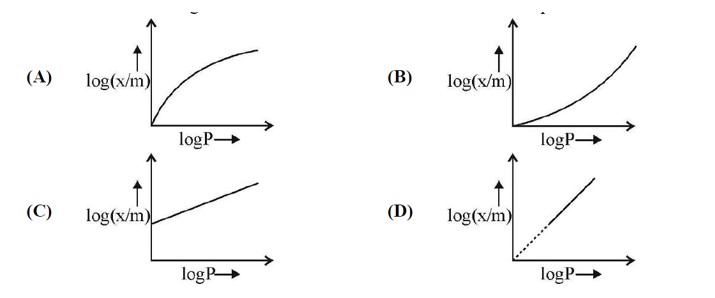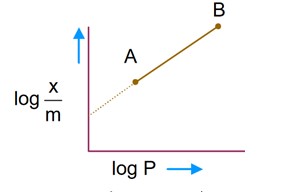Surface Chemistry
Get insights from 217 questions on Surface Chemistry, answered by students, alumni, and experts. You may also ask and answer any question you like about Surface Chemistry
Follow Ask QuestionQuestions
Discussions
Active Users
Followers
New question posted
3 months agoNew answer posted
3 months agoContributor-Level 10
Factual
(A) Magnalium contain Al and Mg
(B) Bell metal ⇒ Cu and Sn
(C) Gun metal ⇒ Cu, Sn and Zn
(D) Chrome steel ⇒ Fe and Cr.
New answer posted
3 months agoContributor-Level 10
Fe acts a catalyst and Mo acts as promoter in Haber's process.
New answer posted
3 months agoContributor-Level 10
Number of mol of A reacted = 1*10? = 10?
Number of molecule of A = 10? * 6 *10²³
Quantum efficiency = (6 *10¹? ) / (1.2 *10¹? ) = 0.50
New answer posted
3 months agoContributor-Level 10
Freundlich adsorption isotherm
Comparing with y = mx + C
so, slope of given graph is
New answer posted
3 months agoContributor-Level 10
SO? is adsorbed more than H? on activated charcoal as critical temperature of SO? is higher than H? As higher the critical temperature, easier is liquifaction of gas and more is adsorption of gas on charcoal.
New answer posted
3 months agoContributor-Level 10
Keq. = ( [C] [D])/ ( [A] [B])
Keq = (10 * 6)/ (2 * 3) = 10
ΔG° = −2.303RTlog Keq. = −2.303 (2) (300) (log 10)
= −1381.8cal (? R = 2cal/molk)
Taking an Exam? Selecting a College?
Get authentic answers from experts, students and alumni that you won't find anywhere else
Sign Up on ShikshaOn Shiksha, get access to
- 66k Colleges
- 1.2k Exams
- 680k Reviews
- 1800k Answers


